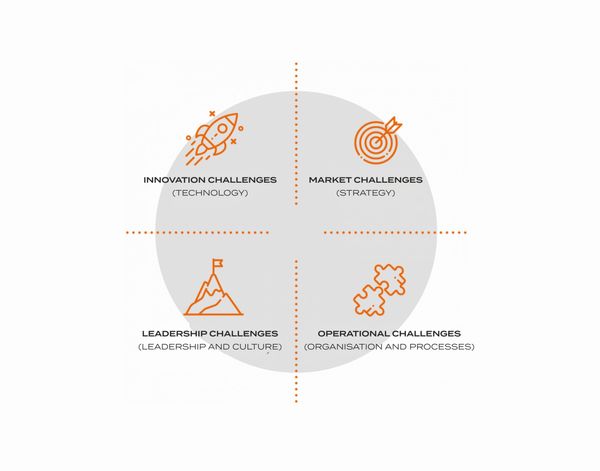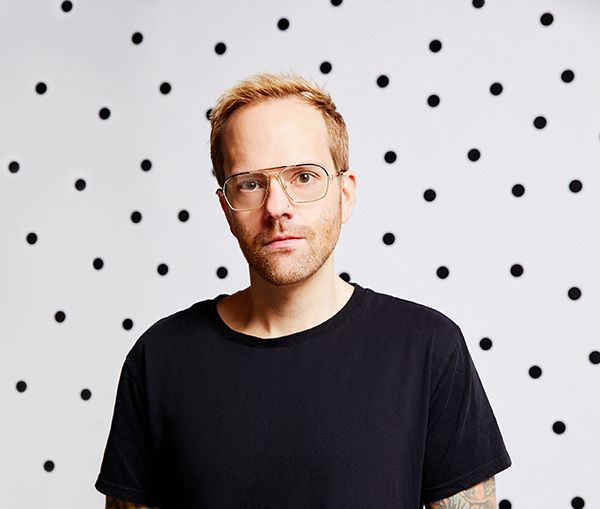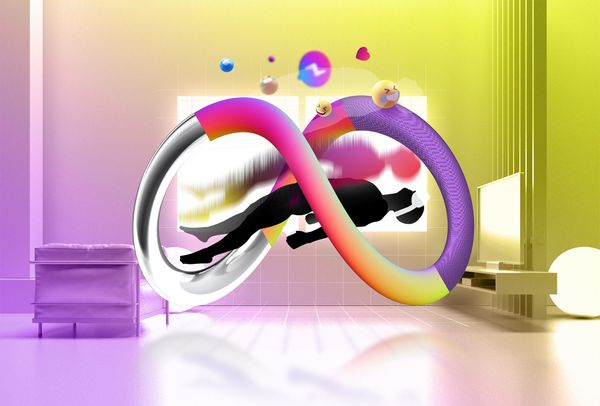Matt Gondek was born in the eighties, so it’s no surprise that his art is most influenced by the visual world of comics and punk culture. The exploding-headed Bugs Bunny and the gangster Donald Duck are the familiar strangers we all understand without a background in art, and Gondek adapts them with good business sense to many different forms, from painting to games to NFT, to reach a wider audience. Perhaps that’s why the American deconstructive pop artist, who was unsurprisingly influenced by Andy Warhol, is so popular with the art world and Instagram. We asked Matt Gondek about his working methods, his studio and his latest upcoming project.
We know you are a self-taught artist. How did the path of becoming a well-known artist look like in your case?
I’ve been drawing since I was a kid. In my twenties, I got into the music industry: I was in many bands, playing on shows, meeting other musicians, and I started designing band t-shirts and posters. When I turned 30, I didn’t want to do that anymore, so I started to work as a freelance illustrator and I opened a store in Pittsburgh, Pennsylvania. I didn’t like that either, so I just started painting one day. I enjoyed it because it was the first time I was making something that was real—up until then everything was on my computer, nothing was real. I was painting for a few years and selling paintings myself on Instagram. About five years ago, a gallery that was in Hong Kong at the time, asked me to participate in a show. It was the first art show I had with a reputable gallery. That was the point when I started to become more successful and I have been working with that gallery ever since.
The main figures in your works are pop culture icons, to be more specific, cartoon characters. What do they represent to you and why did you choose them?
If we are taking it back a long time ago, and look at other eras’ artworks in museums, we find many masterpieces about religion, because at that time it was a huge part of day-to-day life for people. Today things are different. I’m not religious, I was raised on cartoons, comic books and video games. In a way, that is my religion, it is who I am. When I was trying to express myself through art for the first time, I got back to the cultural roots of my life—comic books and cartoons.
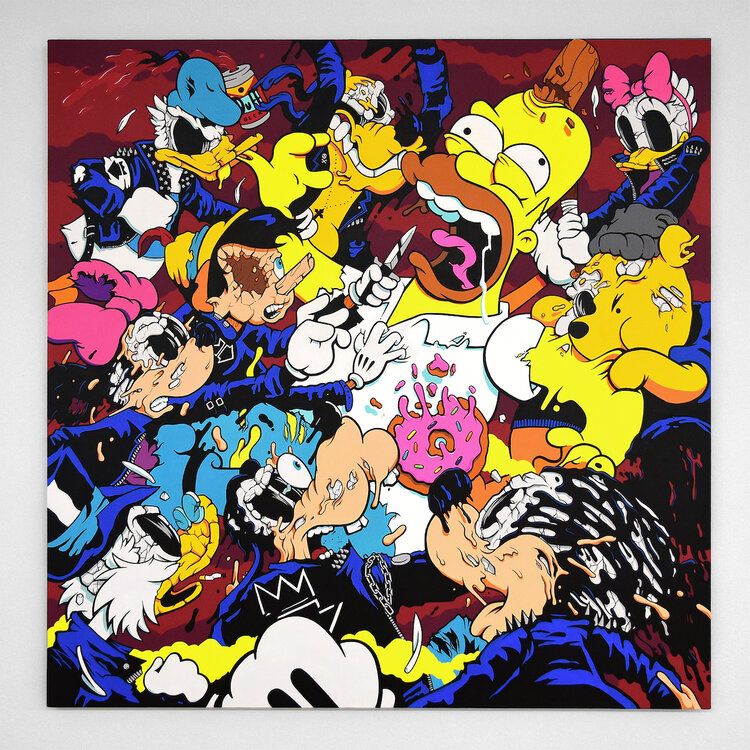
These characters are exploding on your works—you call it deconstructive pop art. Why do you deconstruct them? Can it be interpreted as a critique of pop culture?
These are the characters that I grew up with, they are my gods. However, the other part of me is really close to music. I like punk rock which is based on anticonformity and the destruction of the system. When I take these American gods of pop culture and destroy them, it’s a way how I am addressing both sides of me.
What do you think, why are your works popular?
Pop culture is a very easy access point. You don’t have to be a cultured lover of art to find my work enjoyable because it stems from your childhood. Of course, there are other layers if you go down the rabbit hole, but in general, the depicted characters are approachable for anybody. It also says a lot about where I come from. I do not have any formal art education, any formal training, I just did it. My work reflects that—you can be anybody, when you see my artworks you get a basic understanding of it or at least enjoy it.

Who are the artists that inspire you?
I’m from Pittsburgh, Pennsylvania, just like Andy Warhol was, obviously he had a big influence on me. Andy Warhol is the only American artist that has their own art museum on Earth, which is pretty great. I like a lot of things about him, for example, his pursuit of fame or the way he tried to commercialize his artworks. However, my favorite artist would be Roy Lichtenstein, another American pop artist who replicated what he saw in comic books. I use a lot of similar elements he did.

It is clear that the connection between art and business interests you, in which, as you mentioned, Warhol was an absolute forerunner.
I don’t consider myself a commercial artist—commercial artists replicate works very quickly and put out a maximum quantity of them whereas my paintings sometimes take up months to create. However, I very much love the commercial aspect of the business side of art. That is very prevalent on social media channels, and I love to broaden the number of people who can see and appreciate my works also by releasing prints, toys, T-shirts and NFTs. I was never a graffiti artist, but I love the idea of tagging and getting your name out there as much as you can so more and more people find out about you. It is certainly not for everybody. I have artist friends that are like me and I also have artist friends who are very academic—they stay in the studio, only work on their oil canvas, and that’s fine, too. I just wouldn’t get joy from that.

You also have a studio. How does the working flow look like there?
We tend to work between 10 am to 5 pm. I have assistants and also a studio manager, who is actually here right now painting and helping me with everything. I did as much as I could myself for as long as I could but I only have two hands. This way of work is becoming quite standard in the art world. I still come up with all the creative ideas, but my colleagues help me to execute paintings.
Now it got to the point when my team is better than me in certain aspects. You have to hire people who are smarter than you. That’s the new joy in my life, having the help and letting a little bit of control go to someone who has a more capable talent than I do.
Do you have any special projects that you are working on right now?
Yes, I’m actually working on a new work for a show called Discipline in February. The point of the show is taking out all the colors I don’t need, so I’m doing an entire body of work in five colors: black, gray, blue, pink and yellow. That’s where the discipline comes in and it also has a personal aspect: I had issues with drinking and I am trying to erase it from my life, which is where the other side of discipline comes in. So on one hand, it’s about scaling down the number of colors in the artwork as strong as I can, and on the other hand, strengthening myself and becoming a better human being.
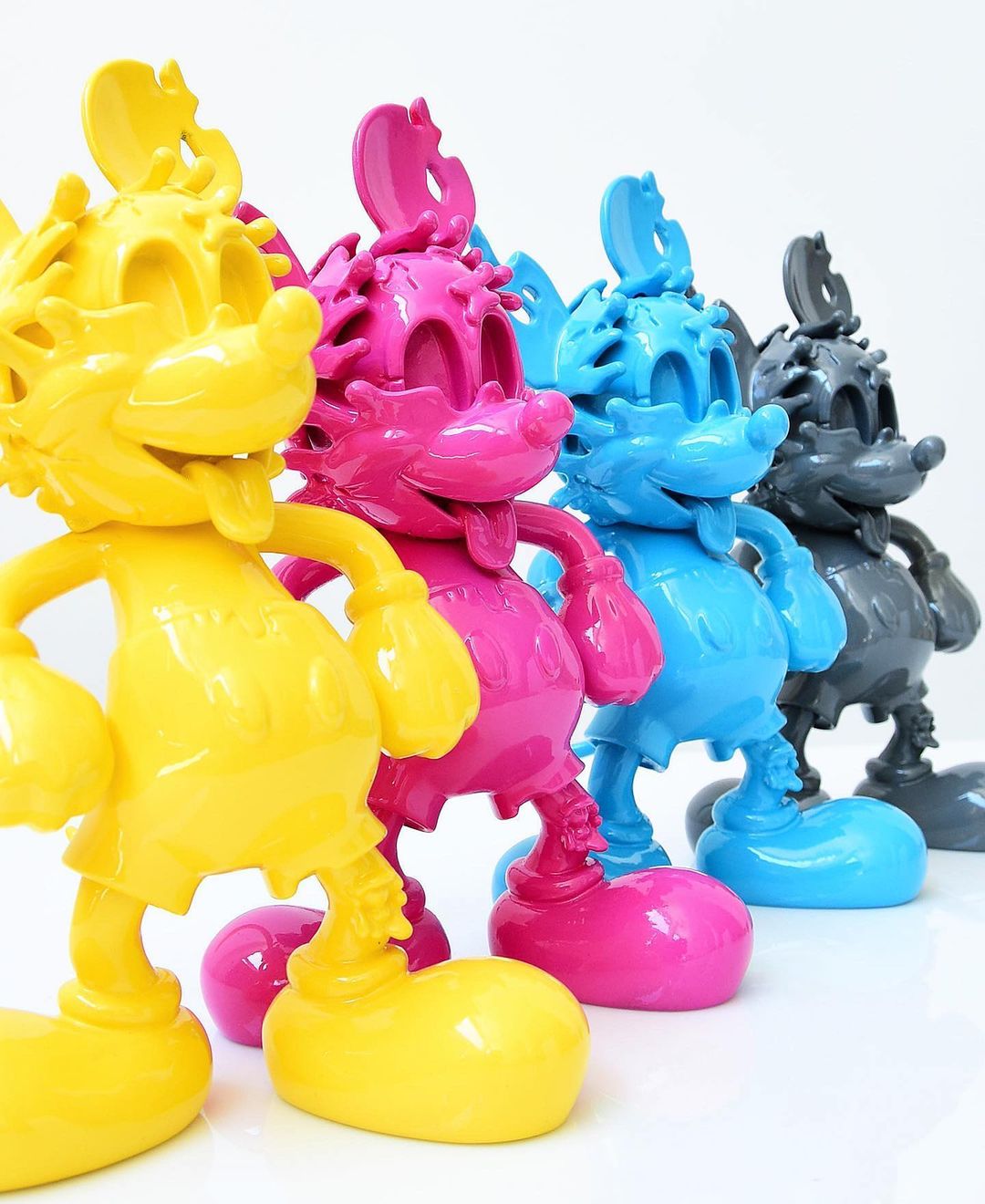

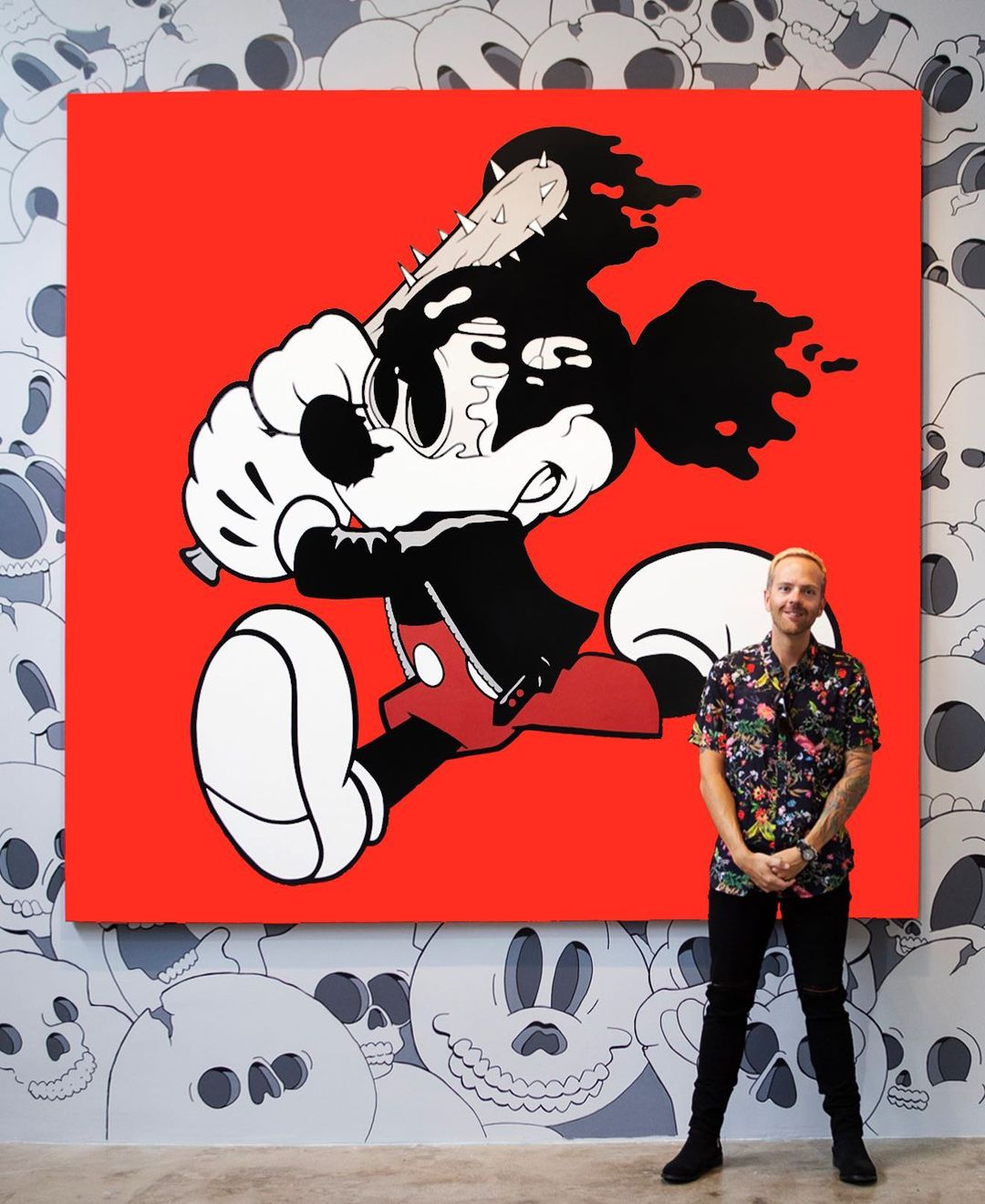
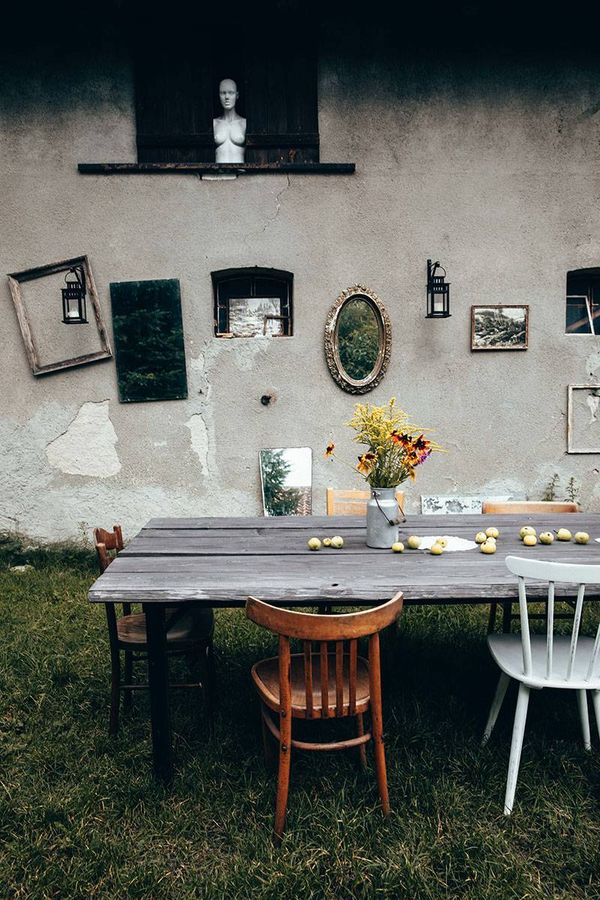
Vogue Travel: A guide to Poland like you haven’t seen before
